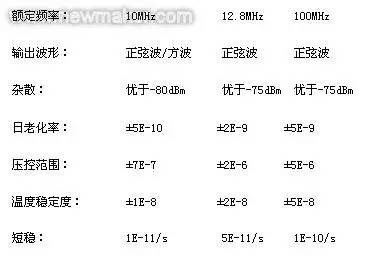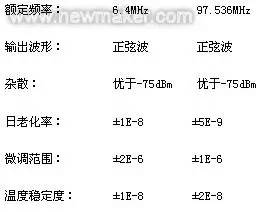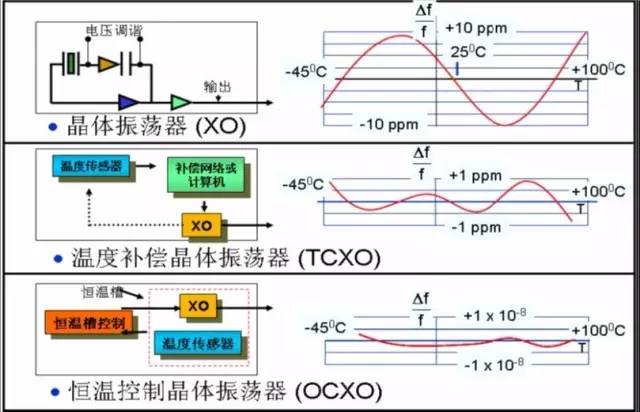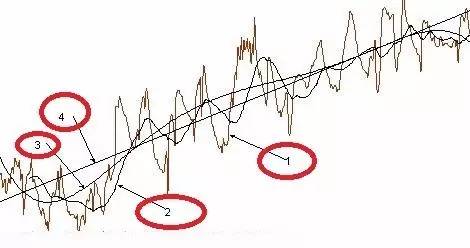QPOR-Power And Control Tray Cable QPOR-Power And Control Tray Cable,Power tray structure cables,Nylon sheathed control cable Jiangyin City Weicheng Special Cable Co.,Ltd , https://www.weichengcable.com
Circuit design techniques consisting of temperature compensated crystal oscillators, etc.
Crystal oscillators are essential components in modern electronic systems, providing stable and accurate frequency references. There are several types of crystal oscillators, each with unique characteristics and applications.
1) **Oven-Controlled Crystal Oscillator (OCXO)**
An OCXO is a type of crystal oscillator that uses a constant temperature bath to maintain the stability of the crystal’s frequency. The crystal is enclosed in a temperature-controlled environment, ensuring that it operates at a fixed temperature regardless of external conditions. This design significantly improves frequency stability by minimizing the effects of ambient temperature fluctuations. OCXOs are widely used in communication equipment such as switches, SDH transmission systems, mobile repeaters, GPS receivers, radio stations, digital TVs, and military devices. Some models include a voltage control pin for additional flexibility. The working principle of an OCXO is illustrated in Figure 3 below:

The main advantage of OCXOs is their excellent frequency-temperature performance, making them ideal for high-precision applications. However, they consume more power, have a larger size, and require about five minutes of warm-up time before reaching stable operation. Our company offers high-performance OCXOs with the following typical specifications:

2) **Temperature-Compensated Crystal Oscillator (TCXO)**
A TCXO is designed to reduce frequency variations caused by temperature changes using an internal compensation circuit. The circuit adjusts the load capacitance in the oscillator based on the detected temperature, helping to maintain a stable output frequency. These oscillators are commonly used in systems where a stable clock signal is needed, often in conjunction with phase-locked loops (PLLs). Some TCXOs use analog compensation, while newer designs incorporate digital compensation, known as DTCXO or MCXO when controlled by a microcontroller. These advanced versions offer higher precision and can operate over a wider temperature range, making them suitable for military and harsh environments. Our company has developed a high-precision MCXO with a leading design and automated production system, capable of producing 5,000 units per month. Its block diagram is shown in Figure 4:

Typical application parameters for this type of oscillator are as follows:


3) **Standard Crystal Oscillator (SPXO)**
An SPXO is a basic crystal oscillator without voltage control, temperature compensation, or automatic gain control. It relies solely on the natural oscillation of the crystal. These oscillators are typically used in applications where high frequency stability is not required.
4) **Voltage-Controlled Crystal Oscillator (VCXO)**
A VCXO is a crystal oscillator that includes a voltage-controlled input pin, allowing the frequency to be adjusted by applying a control voltage. This feature makes it useful in applications requiring frequency tuning. All three types of oscillators—OCXO, TCXO, and SPXO—can be equipped with a voltage control port.
**Total Frequency Deviation**
This refers to the maximum deviation of the oscillator’s frequency from its nominal value due to various factors such as temperature, aging, voltage, and load. It is primarily used in short-term stability measurements, such as in precision radar systems.
**Frequency Stability**
Crystal oscillators exhibit frequency instability over time, which can be broken down into three main factors: aging, drift, and short-term stability. The output frequency of a crystal over time is shown in Figure 2, where different curves represent these stability aspects.

**Frequency Temperature Stability**
This measures the maximum allowable frequency offset within a specified temperature range. Two common metrics are used: one without a reference temperature and one with a reference temperature. Oscillators with the latter are generally more expensive due to the increased difficulty in manufacturing.
**Startup Characteristics (Warm-Up Time)**
This indicates how quickly the oscillator reaches a stable frequency after being powered on. It is especially important for applications that require frequent power cycling, such as frequency meters.
**Frequency Aging Rate**
This measures the long-term frequency drift caused by changes in the crystal and circuit components over time. OCXOs typically have lower aging rates compared to TCXOs, with values ranging from ±0.5 ppb/day to ±3 ppm over ten years.
**Short-Term Stability**
This refers to the frequency stability over short observation periods, such as milliseconds or seconds. It is influenced by internal circuit noise, component quality, and operating conditions. Phase noise is also an indicator of short-term stability.
**Reproducibility**
This measures the consistency of the oscillator’s frequency after being turned off and on again. It is calculated as the percentage difference between two frequency measurements taken after a period of shutdown.
**Frequency Voltage Control Range**
This specifies the range of frequency adjustment achievable by varying the control voltage. For example, a VCXO might have a range of ±2 ppm with a center voltage of 2.5V.
**Voltage Control Frequency Response**
This describes how the frequency responds to changes in the modulation frequency. Typical ranges for VCXOs are 0–10 kHz.
**Frequency Voltage Linearity**
This measures the deviation of the actual frequency response from an ideal linear relationship. A typical linearity specification for a VCXO is ≤±10%.
**Output Waveform**
Crystal oscillators can produce either square waves or sine waves. Square waves are used in digital systems, while sine waves are preferred in applications requiring low phase noise and high spectral purity.
In summary, choosing the right type of crystal oscillator depends on the specific requirements of the application, including frequency stability, power consumption, size, and environmental conditions. Whether for commercial or military use, crystal oscillators remain a critical component in ensuring reliable and precise timing in modern electronics.